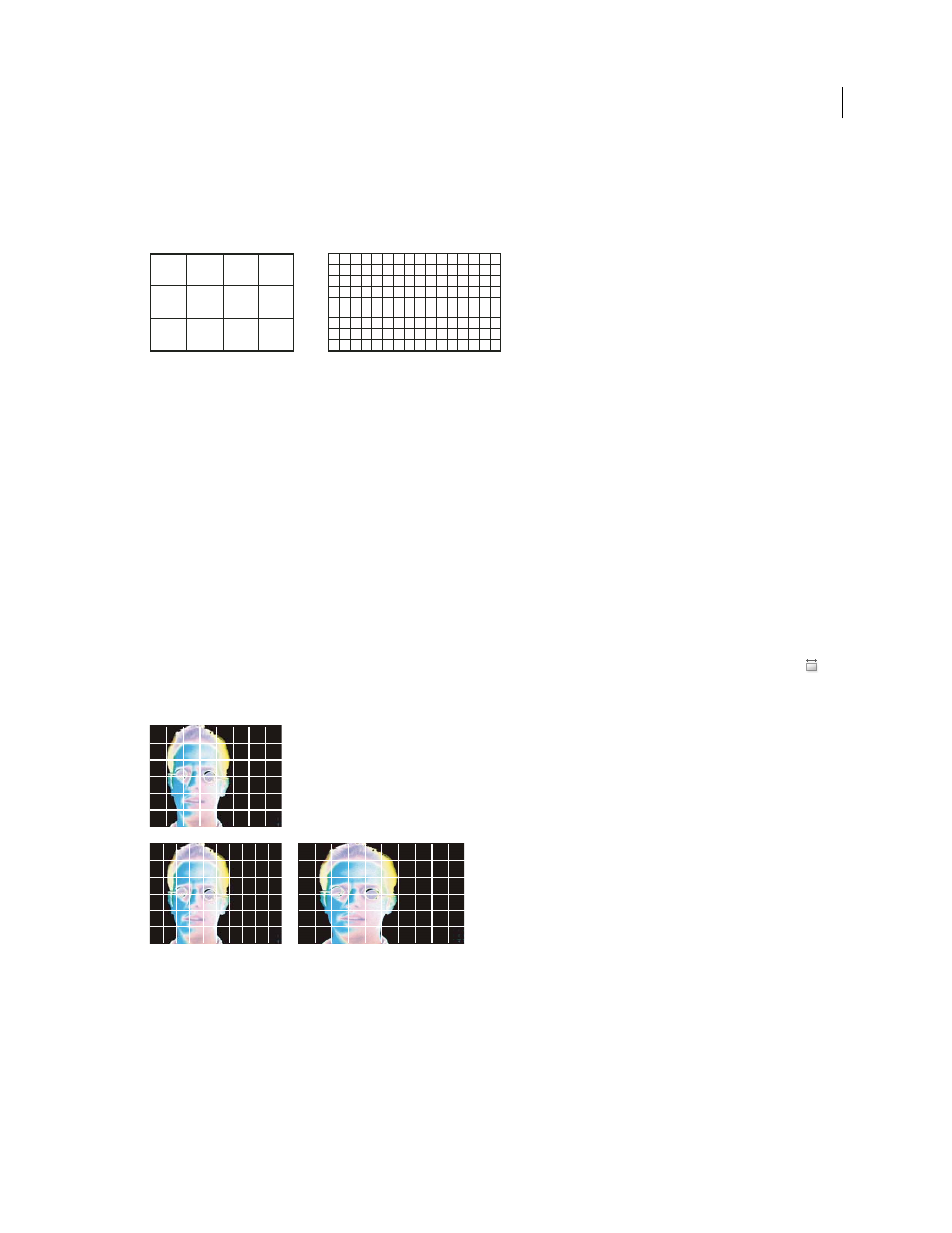Pixel aspect ratio and frame aspect ratio, Pixel aspect ratio and, Frame aspect ratio – Adobe After Effects CS4 User Manual
Page 83

77
USING AFTER EFFECTS CS4
Importing and managing footage items
Last updated 12/21/2009
Pixel aspect ratio and frame aspect ratio
Pixel aspect ratio (PAR) is the ratio of width to height of one pixel in an image. Frame aspect ratio (sometimes called
image aspect ratio or IAR) is the ratio of width to height of the image frame.
A 4:3 frame aspect ratio (left), and a wider 16:9 frame aspect ratio (right)
Most computer monitors use square pixels, but many video formats—including ITU-R 601 (D1) and DV—use non-
square rectangular pixels.
Some video formats output the same frame aspect ratio but use a different pixel aspect ratio. For example, some NTSC
digitizers produce a 4:3 frame aspect ratio, with square pixels (1.0 pixel aspect ratio), and a frame with pixel dimensions
of 640x480. D1 NTSC produces the same 4:3 frame aspect ratio but uses nonsquare pixels (0.91 pixel aspect ratio) and
a frame with pixel dimensions of 720x486. D1 pixels, which are always nonsquare, are vertically oriented in systems
producing NTSC video and horizontally oriented in systems producing PAL video.
If you display nonsquare pixels on a square-pixel monitor without alteration, images and motion appear distorted; for
example, circles distort into ellipses. However, when displayed on a video monitor, the images are correct. When you
import D1 NTSC or DV source footage into After Effects, the image looks slightly wider than it does on a D1 or DV
system. (D1 PAL footage looks slightly narrower.) The opposite occurs when you import anamorphic footage using
D1/DV NTSC Widescreen or D1/DV PAL Widescreen. Widescreen video formats have a frame aspect ratio of 16:9.
Note: To preview non-square pixels on a computer monitor, click the Toggle Pixel Aspect Ratio Correction button
at
the bottom of the Composition panel.
Square and nonsquare pixels
A. Square pixels and 4:3 frame aspect ratio B. Nonsquare pixels and 4:3 frame aspect ratio C. Nonsquare pixels displayed on a square-pixel
monitor
If a footage item uses nonsquare pixels, After Effects displays the pixel aspect ratio next to the thumbnail image for the
footage item in the Project panel. You can change the pixel aspect ratio interpretation for individual footage items in
the Interpret Footage dialog box. By ensuring that all footage items are interpreted correctly, you can combine footage
items with different pixel aspect ratios in the same composition.
3
4
16
9
A
B
C
